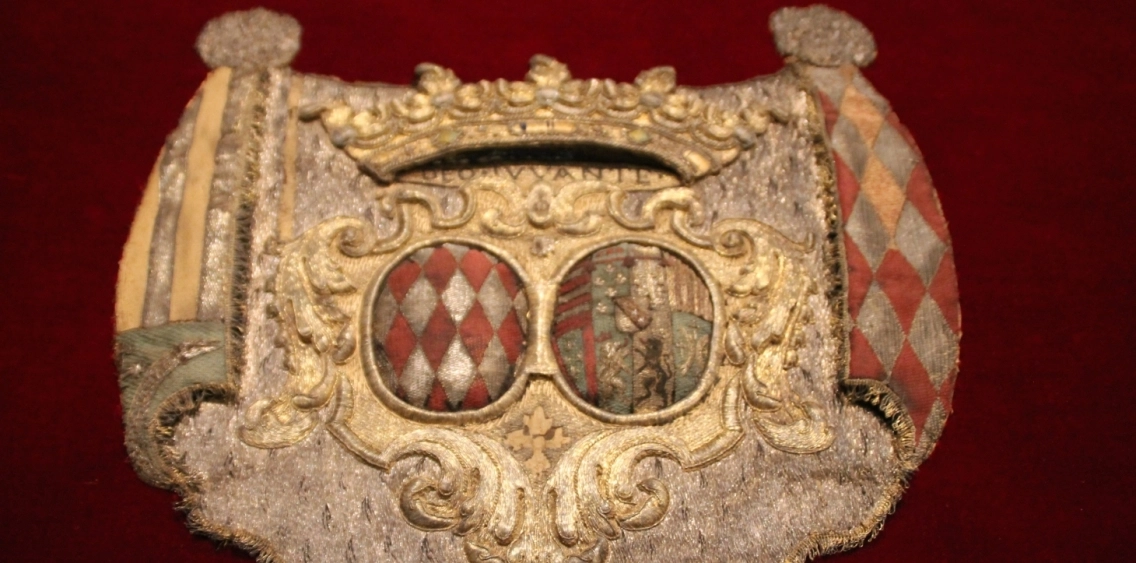The Grimaldi Forum exports "Princes and Princesses of Monaco" to China
Published on 24 October 2017 at 17:21 - Modified the 25 July 2023 at 03:02
This exhibition dedicated to the Grimaldi‘s dynasty will take place in the Forbidden City of Beijing, from September to the end of December, 2018.

The second step expected by the cultural exchange between the Grimaldi Forum Monaco and the Forbidden City of Beijing looks as spectacular as the first one … If this summer, the Monaco Cultural and Congress Center welcomed the treasures of the Museum of the imperial Palace and received successfully 47 000 visitors in two months, it gets ready this time to export to China " Princes and Princesses of Monaco, a European Dynasty (13th – 21st Century)”.
This new exhibition will take place in the prestigious Meridian Hall in the heart of the Forbidden City, from September to December 2018. It will suggest an overflying of more than 700 years of history of one of the oldest European dynasties, the Grimaldis, established on a Rock in 1297, of which the reputation crossed all borders ever since. Designed in association with the Prince’s Palace and with the cooperation of numerous Monaco’s institutions, this exhibition will present six sections, as imagined by the Curator, Thomas Fouilleron, Doctor in History, Director of The Archives and the Library of the Prince’s Palace of Monaco: the religious ceremonial spaces from the church to the cathedral, a dynasty of Italian origin (13th-‐ 17th century), the big "French" centuries (17th - 19th century), the invention of Monte Carlo (19th - 20th century), the mythical marriages (20th - 21th century), and finally the civil ceremonial spaces, from the throne room to the main courtyard of the Palace.
Over 800 m2, the visitors will discover with interest and curiosity the great moments of history from the Grimaldis inseparable to the one of the Principality.
Originally a fortress on the western border of the Italian republic of Genoa, Monaco became the fief of the Grimaldis, one of the city's patrician families, between the late 13th and mid-‐14th centuries. The Franciscan monks supporting the shield on the family coat of arms commemorate the initial taking of the city by the Grimaldis in 1297.
After a long process of establishment of sovereignty, European recognition of Monaco's independence came in the early 16th century. Its rulers then set about shaping a royal court, transforming the fortress into a Renaissance palace.
The aim of the exhibition is to recreate the evolution of Monaco's religious and secular ceremonial spaces since the 17th century. These two sides of the coin structure a chronological presentation of the dynasty's major figures and the high points of the Principality's history.
When Honoré II formally assumed the title of prince in 1612, Europe's monarchical rituals for dynastic births, marriages and funerals were adopted on a scale appropriate to this small state. Marriages were at first arranged with the Italian aristocracy and then, in the late 17th and early 18th centuries, with the French nobility. Monaco went on to exchange the protection of the Spanish Habsburgs for that of France.
Louis I of Monaco (r. 1662–1701), godson of Louis XIV of France, was appointed French ambassador to Rome, and was granted the rank of Foreign Prince at the Court of France when his son married Marie of Lorraine in 1688. In 1715 the marriage of Princess Louise-‐Hippolyte and Jacques de Matignon put the dynasty on a permanent footing, and the Hôtel de Matignon, now the home of France's prime ministers, became the main Paris residence of the princes of Monaco.
In 1793, the French Revolution led to the loss of Monaco's independence. The situation was reversed in 1814, but the Principality went through a long and difficult period culminating in 1848, -‐ Europe's "Year of Revolution" – in the loss of 90% of its territory and 80% of its population. Subsequent economic adjustments led to the development of aristocratic seaside tourism revolving around the gaming tables. In 1866 a new city, Monte Carlo, was created, named after Prince Charles III. Later the Belle Epoque gave rise to a glittering artistic and social scene that made Monaco a European centre of attraction. A man of progress, Prince Albert I (r. 1889–1922) was a pioneer of modern oceanography, and his son, Louis II, gained a reputation for bravery in the First World War.
Louis II was succeeded in 1949 by Rainier III, who married the world-‐famous actress Grace Kelly in 1956. In 2011 their son, Albert II, married Charlène Wittstock in a ceremony that combined fidelity to tradition with a sense of revival.